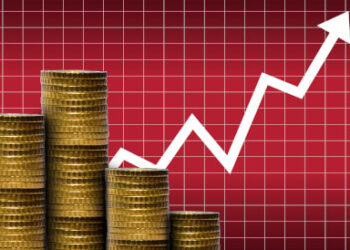The official cash rate was lifted by a further 25 bps on Tuesday (6 June) to 4.1 per cent — rattling equities markets amid growing expectations of a hard landing from inflationary heights.
The central bank has now increased interest rates by a cumulative 400 bps since commencing its monetary policy tightening cycle in May 2022, and its latest statement on monetary policy suggests more hikes could be on the cards.
“Some further tightening of monetary policy may be required to ensure that inflation returns to target in a reasonable timeframe, but that will depend upon how the economy and inflation evolve,” the central bank noted.
The RBA acknowledged economic growth has slowed and labour market conditions have moderated, but reiterated inflation “remains too high”.
The central bank also expressed concern over a “pick-up” in wages and flagged the risks of a wage-price spiral.
This follows the Fair Work Commission’s recent decision to lift the minimum wage by 5.75 per cent.
“The board remains alert to the risk that expectations of ongoing high inflation contribute to larger increases in both prices and wages, especially given the limited spare capacity in the economy and the still very low rate of unemployment,” the RBA added.
“Accordingly, it will continue to pay close attention to both the evolution of labour costs and the price-setting behaviour of firms.”
Reflecting on the latest cash rate decision, Andrew Canobi, director fixed income, Franklin Templeton, said Fair Work’s decision may have tilted the balance at the monthly board meeting.
“The RBA seems to have taken fright from the minimum wage decision which is strange given it was arguably only marginally above expectations,” he said.
However, the RBA’s decision also follows the latest monthly consumer price index (CPI), which reported annualised inflation of 6.8 per cent in April, beyond the 6.4 per cent forecast and the first acceleration in 2023.
But according to Mr Canobi, the RBA’s main aim of bringing inflation down risks inflicting a deep wound on the economy.
“The outlook for the Australian economy looks fairly grim from here as the household sector continues to get indigestion from an abundance of hikes that are still making their way into the economy,” he said.
“…With inflation cooling, wages growth largely consistent with their expectations and evidence mounting that the consumer is retrenching this move is a surprise.
“Sadly, it seems the prospects of more to come remains which worries us deeply for the macro outlook over the next 12 months.”
AMP Capital chief economist Shane Oliver said a recession can still be avoided but said risks of a recession are now 50/50.
“The RBA retains guidance towards further tightening. This will cause major pain for households with a mortgage but as always it takes time to fully show up with the lags a bit longer this time given more fixed rate mortgages than normal and pent-up demand from the pandemic ahead,” he said.
“But those supports are now wearing thin and the narrow path the RBA refers to is now likely very narrow with a high risk we get knocked off it into a recession we don’t have to have.”
Commonwealth Treasurer Jim Chalmers said the RBA’s decision to hike again is not a response to the government’s fiscal policy strategy amid claims $20 billion in spending over the forward estimates would exacerbate inflationary pressures.
He declined to offer justification for the central bank’s hike, adding it was up to RBA governor Philip Lowe to explain the central bank’s rationale.
“The Reserve Bank’s job is to squash inflation without crashing the economy, and they will have lots of opportunities, of course, to explain and defend that decision that they’ve taken today,” Treasurer Chalmers said.
“My job is different. I take responsibility for my part of managing the economy.”







